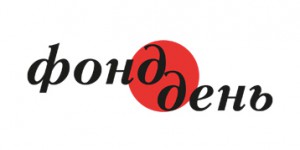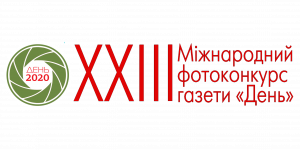As we recollected all the responses to “Armor-Piercing Political Writing” that we had heard, read, and analyzed since the series was presented a week ago at the Publishers’ Forum, several notions took shape.
Firstly, almost everyone who mentioned the absolute timeliness of this series also noticed that the 19th-20th century journalism is still timely, too. This is not only evidence of the authors’ brilliance (by the way, journalism and essayism as a genre was favored by Ukraine’s best men of letters, from Taras Shevchenko to the Sixtiers). It also testifies to the fact that Ukraine’s key problems were never solved, and the two independent decades were not enough even to at least interpret them, let alone anything else. Thus, “Armor-Piercing Political Writing” is a kind of code of Ukrainian mistakes and, consequently, an antidote of sorts.
“The appearance of these 15 concise, yet so deep, books shows, on the one hand, the continuity of Ukrainian journalistic tradition. On the other, it reveals the continuity of our huge problems, inherited from the past. The readers of ‘Armor-Piercing Political Writing’ will understand this,” remarked Iryna KLIUCHKOVSKA, director, International Institute for Education, Culture, and Contacts with the Diaspora at the Lviv Polytechnic National University, as she first presented the series to the Lviv public.
Secondly, it is journalism and essayism as a genre that is brought into focus. Unfortunately, far from all departments of journalism (even those at Ukraine’s top universities) teach, or at least give their students a taste of, quality journalism, domestic or international. As if one still could end up in jail for reading Ivan Bahriany’s well-known (or obscure for the majority?) essay Why I Do Not Want to Return to the USSR… Meanwhile, journalism is a very important genre for Ukraine and has been known here since medieval times, as Yevhen Sverstiuk mentioned in his commentary.
By the way, in his Molod Velykoi Ukrainy i nashi zavdannia (The Youth of Great Ukraine and Our Missions) Bahriany expressed very important ideas: “Some interpret it as a kind of toneless apotheosis of embroidered shirts, nightingales, romantic steppe grasses, bottomless sharovary, devil in a barrel, etc. – in a word, all this pathetic ‘Little Russian’ Ukraine, all these primitive pastoral images with all their sentimental accessories, the Ukraine of drowsy Myrhorod and Kvitka-Osnovianenko, which has never been, and will never be made anew, but for an operetta. By the by, curiously, our enemy goes along the same line, doing its best to revive that ‘Little Russian’ Ukraine in the theater, in art – all in order to obscure the true image of the true, breakthrough Ukraine which continues its path to the international arena despite everything, declaring war on Moscow. The image of modern Ukraine. Moscow fears this image, and wants to replace it with something primitive. To accomplish this, our enemy used terror to slow down the true Ukraine’s rapid progress, and then got down to cultivating all our sweet little primitivisms in the Ukrainian mentality. This is only done to show such Ukraine to the world, as a backward, hopelessly stupid nation, incapable of progress, loath to part with age-old, primitive past. A nation which, besides the embroidered sorochka and hopak, never created anything else, and is simply unable to create anything. That is the message.”
Who can say that this has lost its urgency? Who will say that these ideas should not be as easy to access as, say, tabloids? Moreover, in Ukraine, only a handful have been lucky to realize this. Importantly, it was the journalism of the 19th-20th centuries that laid foundation of Bahriany’s “modern Ukraine.” Again, only a few of our fellow citizens know of this image. Correspondingly, only a few could make conscious effort to “develop” modern Ukraine and “expand” it beyond our country’s geographical boundaries. This is actually what makes “Armor-Piercing Political Writing” so important, in our view – as important as, let’s say, Syla Miakoho Znaka (The Power of the Soft Sign), albeit the two publications are inseparably connected. In the many works, collected under the covers of these 15 little books, great minds reach out to Kyivan Rus’ times, relying on them as on the fundamental principle.
“As soon as the series ‘Armor-Piercing Political Writing’ was published, we immediately put it on sale. We know that Den’s books enjoy high demand, especially last year’s The Power of the Soft Sign. This is to say that Den is a brand,” says Kateryna FEDORENKO, director of the chain YE Bookstore. “Moreover, ‘Armor-Piercing Political Writing’ represents a constellation of authors. Shevelov, Hryhorenko, Samchuk, and Malaniuk – these names alone are enough to evoke the readers’ interest. Now, we have 15-in-1! So we will be looking forward to seeing the sales figures.”
Anyway, the book is not purely an intellectual phenomenon, but also an esthetic object – of course, given the correct approach. The artist Anna Havryliuk was able to find it, so the transformation from thick, hard-cover to pocketbook format was painless and smooth. And this is the third important quality, brought out by anyone who has already got acquainted themselves with “Armor-Piercing Political Writing.”
“For Den/The Day’s Library it is an absolutely new format. I loved the idea of providing a pencil, to go together with the collection. In a way, it legitimizes my passion for underlining interesting and important passages in books,” says Olesia YAREMCHUK, graduate of Den’s Summer School of Journalism, graduate student at the Journalism Department, Lviv National University. “It is also great that now the handy format allows to have texts by the key Ukrainian authors close at hand. Their ideas, too, must be close at hand in the sense of world outlook, so we could always be guided by them.”
The idea of publishing Ukrainian essayists “retail” justifies itself not only from the viewpoint of format mobility, which is really important today, but also as a test of our readers’ intellectual tastes. Summarizing the sales of “Armor-Piercing Political Writing” at the Publishers’ Forum, we found out that the most-demanded authors were Yevhen Malaniuk, George Shevelov, Mykola Khvyliovy, Mykola Kostomarov, and Vasyl Stus. What does this interest mean? What exactly are Ukrainians looking for in the texts written by these different authors from different epochs? This is probably the topic for another article, or maybe, for a doctoral thesis.







